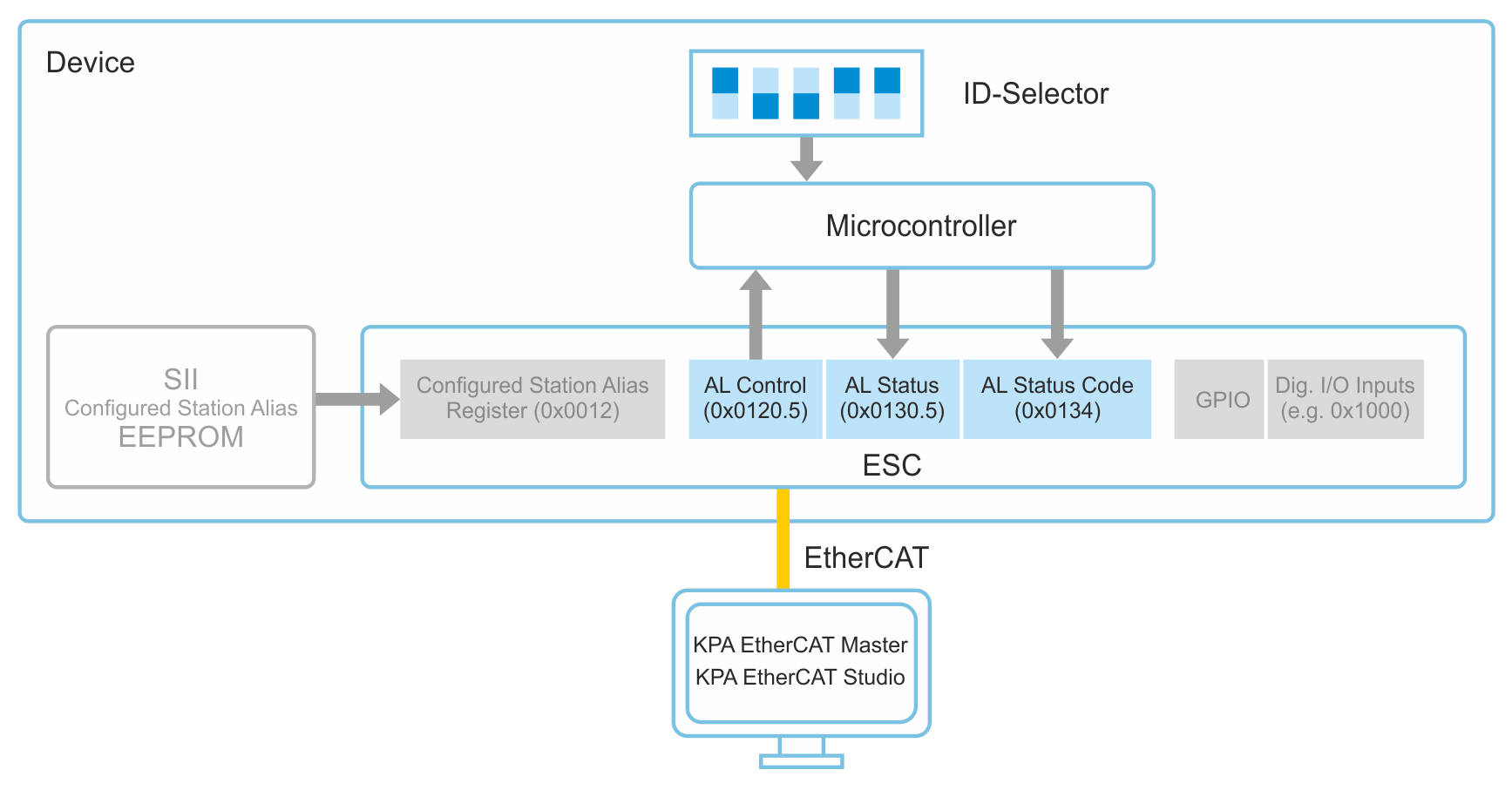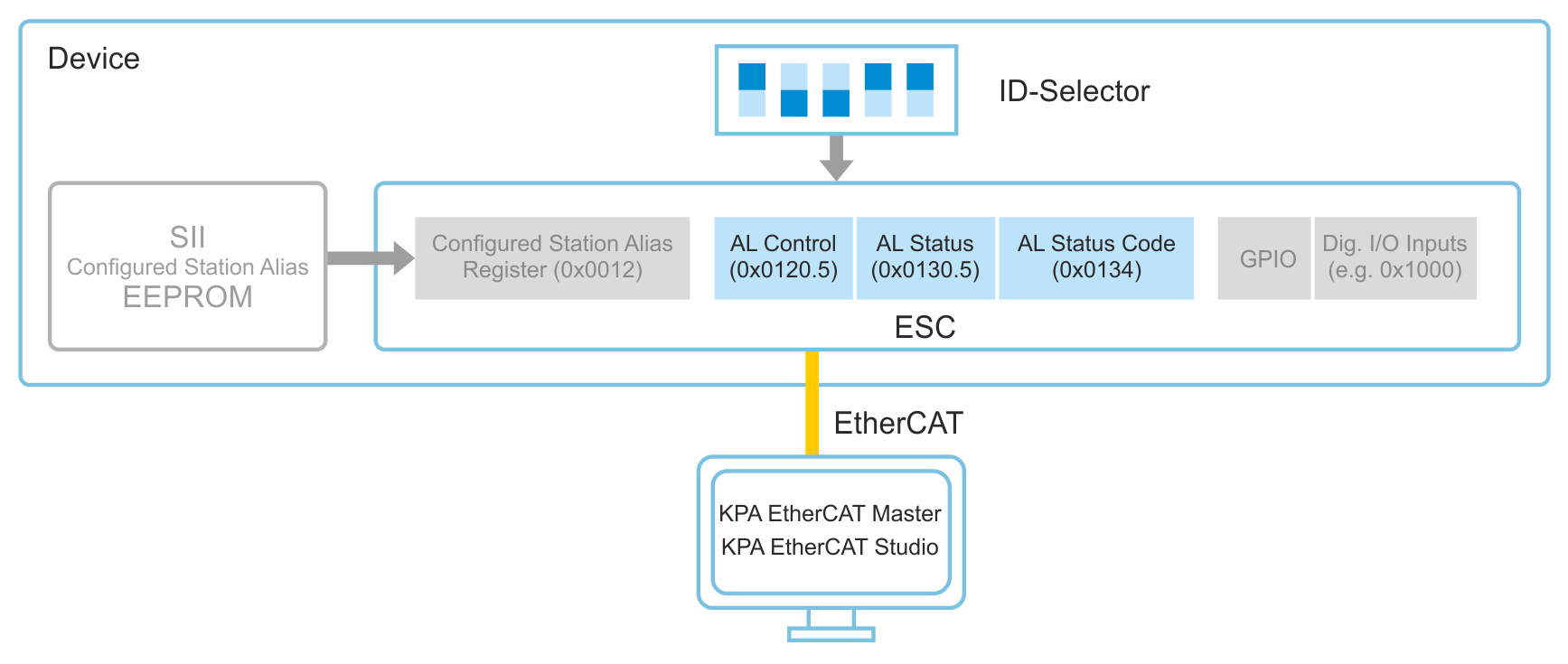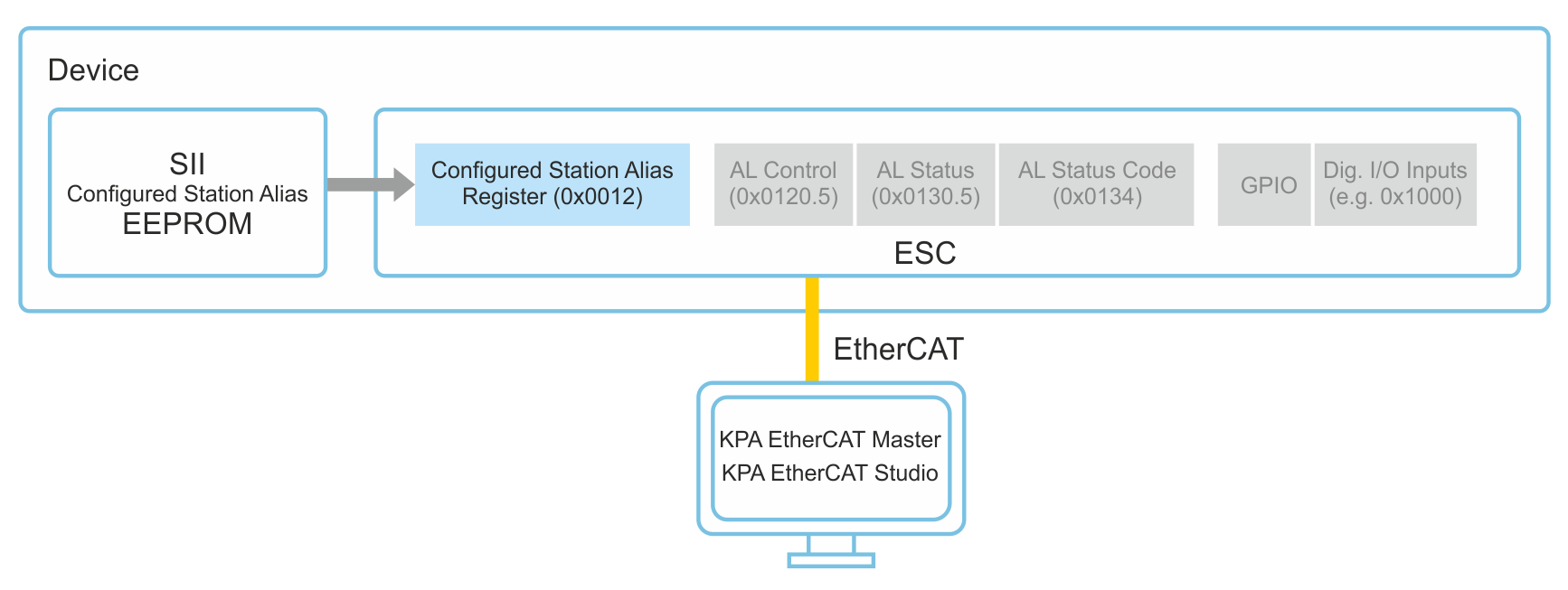EtherCAT technology allows slave addressing in different ways depending on device’s possibility and user’s needs.
The use of EtherCAT Device identification is to identify an EtherCAT slave explicitly. This is necessary for the following use cases:
- Hot Connect applications
- Prevention against cable swapping
Also, the Device Identification value can be used optionally for unique addressing. The Device Identification value should be set uniquely within a network configuration.
For slaves supporting the Safety functionality Device Identification is mandatory even if one Safety slave is on the bus.
Three different mechanisms for setting the Device ID are used according to the specification ETG.1020 Protocol Enhancements:
Explicit device identification (Configured station alias, Requesting ID and Direct ID) is a modern way of the device identification. In most cases it is much more faster than identification via EEPROM Alias. Old devices (which were published before releasing of the ETG 1020 standard, 01.2016) can be identified only with EEPROM Alias.
The way of device identification in the project is mostly defined by the mechanism of setting ID which the device supports and by applied internal rules in the company. To choose proper way of the identification for your device please check the documentation for the device (to get information which exactly mechanisms are supported and how to set ID) and your internal rules.
For details, please, refer to Master documentation.





